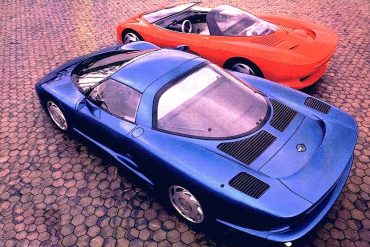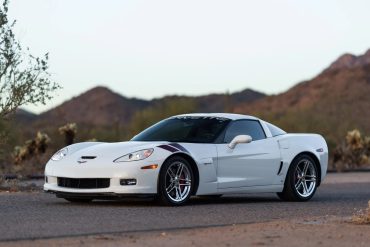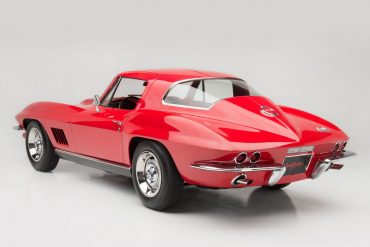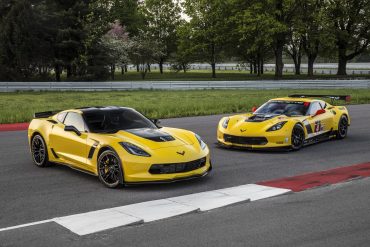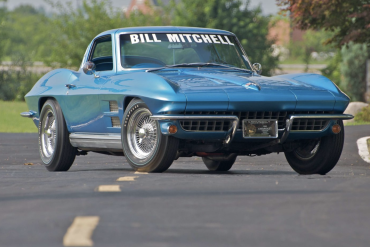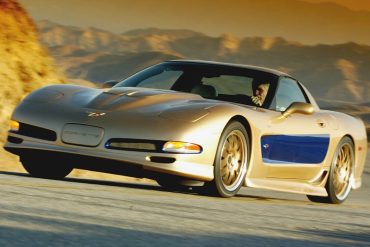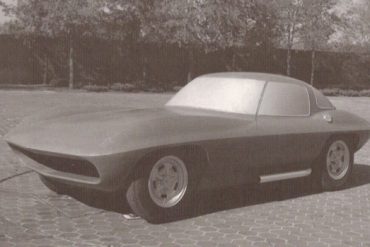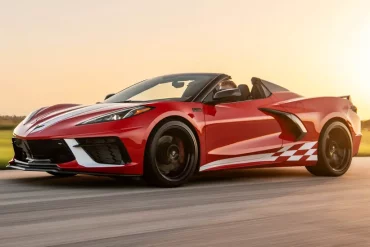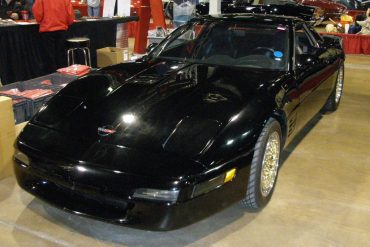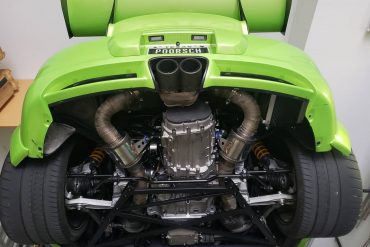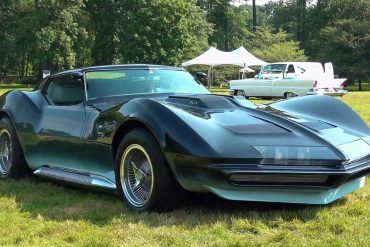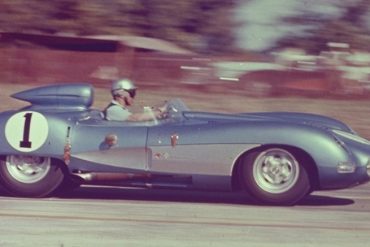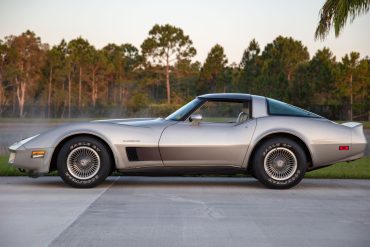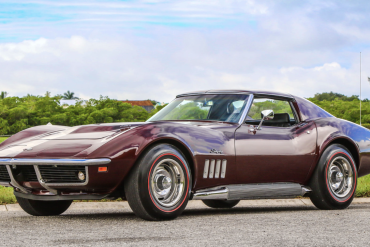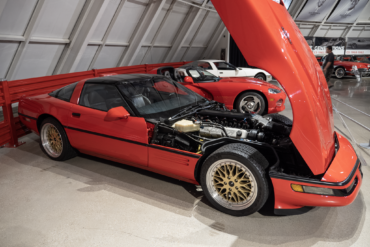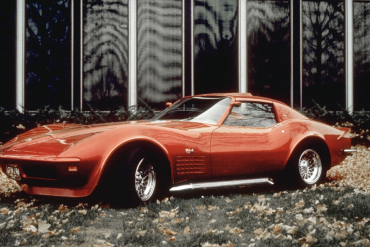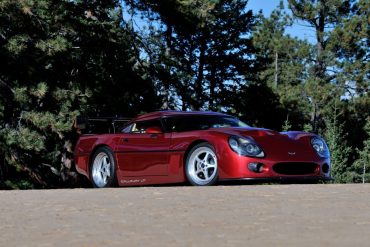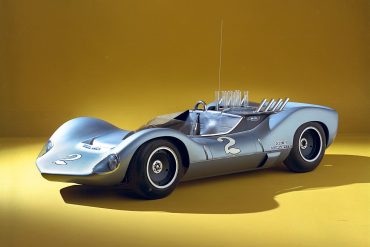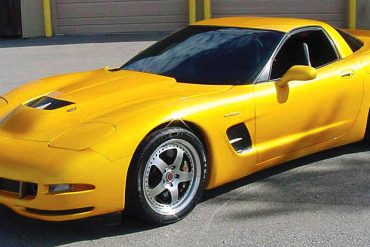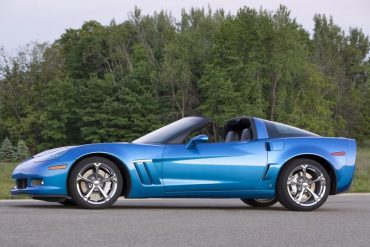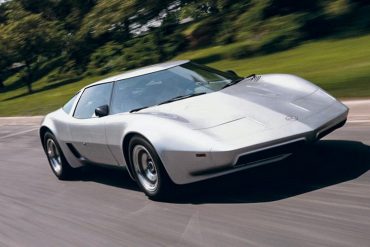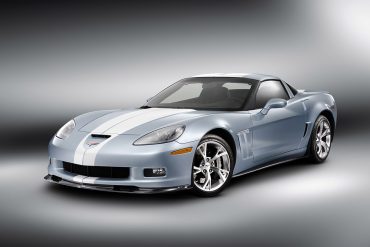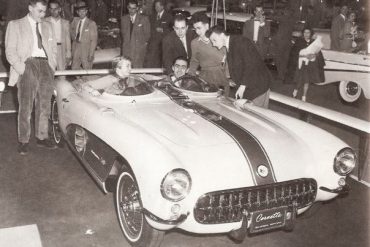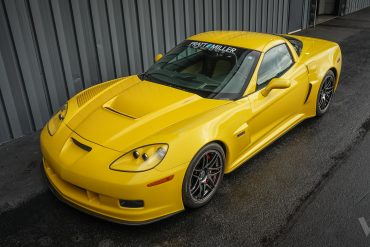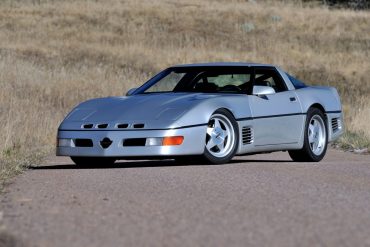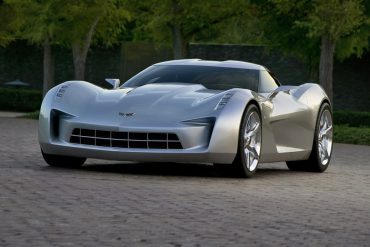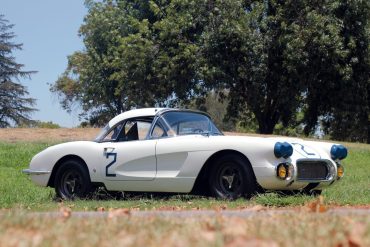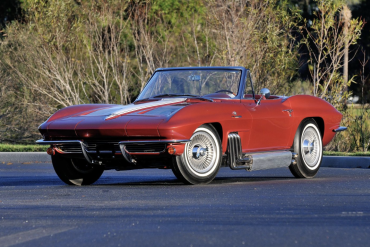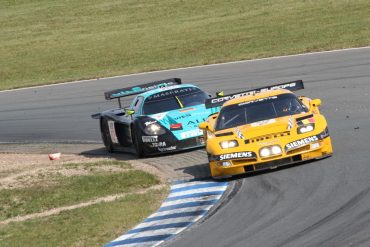While it was understood that the Corvette Indy Concept would never be fully realized as a production vehicle, it paved the way for the creation of the twin-turbo CERV III. The CERV III (Chevrolet Engineering Research Vehicle No. 3) was introduced in January, 1990 at the International Auto Show in Detroit, Michigan. Like the latter iteration of the Corvette Indy Concept car, the CERV III was fitted with a 5.7 Liter, 32-valve, dual-overhead cam LT5 engine that featured twin turbochargers. It had 650 hp and 655 lb/ft of torque and top speed of 225 mph.
The “Ron Fellows ALMS GT1 Championship Edition Corvette Z06,” or Ron Fellows Edition for short, stands as the first autographed...
The L88 was a special option package developed under the direction of Zora Arkus-Duntov, director of GM’s performance division. First introduced in 1967, the L88 Corvette featured a highly modified version of Chevy’s 427-cubic-inch V-8 engine. Although this engine received a factory horsepower rating of 435, actual engine output was somewhere between 540 and 580 horsepower, giving the “stock” L88 enough power to run a quarter-mile in the high-11-second range!
The 2016 Corvette Z06 C7.R Edition is a road-going, track-capable homage to the Corvette Racing C7.R racecars. It’s offered in Corvette Racing’s signature yellow livery – or black – with coordinated exterior and interior accents. Only 500 examples of the C7.R Edition were built and all included the Z07 Performance Package with carbon ceramic brakes, as well as a specially serialized vehicle identification number. Corvette special editions don't get more fun than this.
The most innovative of the Bob McDorman Collection’s GM Styling Corvettes is this Blue Metallic one-off enjoyed by GM Styling legend Bill Mitchell. The unique paint is accented with a custom made die cast front grille and matching dual front fender vents. A willing 327 CI engine gave this gem all the performance the boss could have asked for...
In 2003 Dick produced his version of a 50th Anniversary Corvette. Dick’s 50th Anniversary Corvette was bright gold with blue accents. And of course a “special” Corvette should be the toughest available version, which in 2003 was the Z06. And to top it all off, the Z06’s LS6 was opened up to the magical “426 CID.” The GS80 came out in 1986 that was more or less a Showroom Stock-prepared black beauty with very trendy lace wheels.
Somewhere in the second part of 1959, project XP-720 begins at GM Styling, to design a production Corvette based on Bill Mitchell's Sting Ray racer. It would become known as the C2 or second generation Corvette. In October of that same year, a clay mock-up of project XP-720 is completed and put on display for General Motors' management viewing.
Since the arrival of the eighth-generation Stingray Corvette in 2020, and with it, the arrival of Corvette’s first hard-top convertible,...
CERV IV was nothing more than a C4 with the all new powertrain and interior in it. Read the commentary of a car magazine reporter: "We suspect that the first, very early prototypes of the all-new, Gen III ran on the dynos at GM Powertrain sometime in the early spring of 1993. In-vehicle testing began at the GM Milford Proving Ground in the first week in May of 1993 with the "Chevrolet Engineering and Research Vehicle IV-A".
Check out this LS Powered Porsche Cayman! The Debate Is Over – How Do You Make A Porsche Faster? Stick...
The Manta Ray was actually the 1965 Mako Shark II (XP-830) with a few upgrades, so it featured many of the Mako II's outward features, such as side exhausts and a lower-body (along the rocker panels) silver paint job. The front end had a pointed chin spoiler and the headlights used 2 banks of 3 quartz-halogen lights.
The Corvette SS began life as an experimental race car, and was unveiled to the public at the 12 Hours of Sebring endurance race on March 23, 1957. The SS was in training for Chevrolet's debut at LeMans that year. The Sebring race was, in many ways, Chevrolet's inauguration into modern racing. But the SS never finished the race, much to the dismay of the racing community.
To celebrate the departure of the third-generation Corvette, Chevrolet decided to offer a final commemorative “Collectors Edition” model. However, recalling their experience with the 1978 Pace Car Replicas it was decided that the 1982 Collector Edition Corvettes would be built only “as needed” to satisfy customer orders and that they would get unique vehicle identification plates to help deter someone from turning a standard car into a Collectors Edition knock-off.
Power and blinding acceleration were the driving forces behind the development of the 1968-1969 Chevrolet Corvette 427. Only 390 1969 Corvettes were built with the famous L89 427 and while the L89 option was chosen 624 times in 1968, it is still a rare beast relative to total production. The 427 CI engine was good for 435 HP and a strong 460 lb-ft of torque making it one of the best-accelerating cars of its time.
The Corvette team decided to one-up the Viper with four extra cylinders, they decided on one of Ryan Falconer’s stunning, all aluminum, 600-cubic-inch, 683hp, 680 lb-ft V-12 racing engines. The biggest challenge was the fact that the all-aluminum V-12 engine was 8.8-inches longer than the production Corvette engine. So the front end of the ZR-1 would have to be stretched 8 inches. This test car was named Conan, after his raw, beastlike charisma.
Only Bill Mitchell could get away with this. Bill always managed to have a hot daily ride. Engineering prototypes that weren't street-legal stayed behind the fence, but many of the show car Corvettes managed to go home with Bill. His usual statement on his "design study" cars was, "This thing runs like a bear!" For the Mulsanne Bill added, "This is the best Stingray ever."
The offspring of collaboration between Corvette performance guru Reeves Callaway and designer Paul Deutschman, the Super Speedster LM is an astonishing step up on the original Speedster, taking full advantage of the ZR1’s Lotus-engineered, all-aluminum DOHC engine and 6-speed manual transmission. One of only three twin turbocharged and intercooled LT5 engines built by Callaway, it delivers a pavement-shredding 766 HP.
The GS II (Grand Sport II) was a test vehicle completed in late 1963 by Chevrolet Engineering Center (C.E.C.). The chassis was constructed of spot-welded sheet steel and was fitted with narrow tires. With only minor testing done at GM’s test facility in Michigan, the vehicle was shipped to Texas to the Chaparral Cars test facility.
Chevrolet Corvette “Tiger Shark” Concept, 1997. A C5 Corvette powered by an alloy 742hp LS1 427ci supercharged V8. Other modifications included upgraded Brembo brakes, 18-inch Kinesis Motorsport K58 forged wheels and a hood dome to clear the supercharger. It was built by Detroit prototype shop Wheel-To-Wheel and sold for $112,200 in 2009 at the GM Heritage car auction.
The 2010 Grand Sport Corvette was introduced to the world at the 12th annual C5/C6 Corvette Birthday Bash, which was (and is) held at the National Corvette Museum in Bowling Green, Kentucky. During its unveiling, it was announced that the new Grand Sport would be offered as either a coupe or a convertible, and it would feature an appealing combination of the LS3 power plant fused with the Z06 Corvette’s wide track chassis and styling features.
The Chevrolet Aerovette (originally designated Experimental Project XP-882) was developed in the late 1960's under the watchful eyes and mind of Zora Arkus-Duntov. Unlike the XP-819, which ultimately proved to have too much rear weight bias, Duntov focused on developing the Aerovette as a mid-engine platform.
The Carlisle Blue Grand Sport Concept is painted in a very cool Carlisle Blue exterior with exquisite Pearl White full-length racing stripes. This color combination is highlighted with Silver-painted Torque 2 wheels. The Corvette also benefited from carbon fiber front splitter and rockers, a full-width rear spoiler, and a Grand Sport style hood blanket. For the interior, Chevrolet has opted for Ebony/Titanium leather with blue stitching, a new Bose Premium Audio with nine speakers.
The Corvette SS racing car and its mule test car were planned as far back as August of 1956, well before the Super Sport show car. However, that one was referred to within GM as the XP-64, and it was finished in march, well after the show car had been on the show circuit for a couple of months.
It only takes a quick once over to notice there is something special and different about this C6. From the...
This Sledgehammer reached 254.76 mph at the Transportation Research Center (TRC) in Ohio and became the world’s fastest street-legal car for some time. It was built up by Reeves Callaway in Connecticut as an example of what was possible with the new ZR1 and and turbocharging its LT5 engine. The result was a 898 bhp coupe that still retained luxuries such as air conditioning and a radio. It got this power by using a NASCAR-spec block with Mahle pistons and a massive turbo.
SIDESWIPE takes the form of a sleek, vision concept dreamed up by the Corvette designers at GM. The design is influenced by the original Stingray race car, introduced in 1959, but also draws on Corvette heritage cues from other generations. It brings them together in a futuristic shape that seems to be equal parts racecar and space ship.
Could This be the Hybrid? Over the holiday weekend, GM was apparently out testing a new version of the C8...
The story of the Corvette and how it came to race at Le Mans is one in which the dreams of a number of individuals intersect, over a prolonged period of time. While each of these dreamers came from vastly different backgrounds and held often times very different agendas, they all shared a common vision—an American sports car winning the 24 Hours of Le Mans. For Le Mans, the Sebring #2 car was renumbered as #1.
The Corvette built for 'Bunkie' Knudsen is a 1963 Chevrolet Corvette styling car known as the "Bunkie" Knudsen Corvette, built for Chevrolet general manager Semon E. "Bunkie" Knudsen. Finished in Rose Pearl with a full-length White racing stripe, it is outwardly distinguished by its chromed header-style pipes.
The Corvette C5-R was part of a plan by General Motors and their Chevrolet brand to create a factory team to participate in grand touring races not only in North America, but also elsewhere in the world, most notably at the 24 Hours of Le Mans. GM had previously been against approving factory support for Corvette racing programs, although the IMSA GT Championship's Corvette GTPs had seen some support until they ended competition in 1989.


